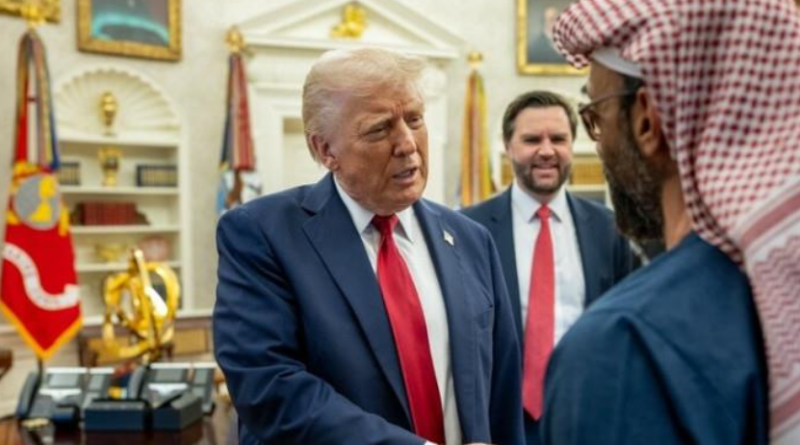UAE to Invest over $1.4 Trillion in the U.S Infrastructure
Peter Gozsa
Staff Writer
In a bold attempt to deepen economic ties with the United States, the United Arab Emirates (UAE) has revealed a record-breaking $1.4 trillion, 10-year investment strategy focused on expanding UAE interests in U.S. markets of artificial intelligence, energy, semiconductors, and manufacturing
The commitment, unveiled by the White House on March 21st, follows a series of high-profile Washington sit-downs including a meeting between UAE national security adviser Sheikh Tahnoon bin Zayed Al Nahyan and former President Donald Trump at the Oval Office. A follow-up dinner with U.S. Vice-President JD Vance and senior cabinet members further solidified the partnership, joined by UAE sovereign wealth and corporate leaders.
Though the $1.4 trillion number gets eyebrows raised, several of the investment agreements included within the framework had already been made public. The most significant new agreement, however, is the construction of the first new U.S. aluminum smelter in 35 years, sponsored by Emirates Global Aluminium (EGA). The facility, according to the White House, will “nearly double” America’s capacity for aluminum production—a huge boost for local manufacturing and supply chain resilience. “Having a large aluminium smelter in the U.S. has been high on EGA’s list of priorities for many years,” said an EGA spokesperson.
One of the strongest highlights is a $25 billion energy infrastructure and data center investment plan by UAE sovereign wealth fund ADQ and U.S. private equity house Energy Capital Partners. Although this partnership had already been disclosed, its mention is a repetition of the strategic push towards focusing on long-term, sustainable industries with growth potential.

The UAE, a long-standing U.S. security ally and major oil producer, is gradually moving toward economic diversification, betting on AI and cutting-edge technology to diversify out of fossil fuels. Its recent initiatives in Washington indicate a persistent push to establish itself in the international tech and infrastructure economy via American partnerships.
This rush of investment also follows Trump’s efforts to secure more foreign investment in the American economy, the same requests made to Saudi Arabia earlier this year. Trump reportedly will travel outside the country for his first international trip since joining the political arena again to the Gulf region in the quest of signing another super-investment agreement.
As strategic cooperation between the U.S. and Gulf states continues to grow, the UAE’s $1.4 trillion pledge is a milestone in global finance and diplomacy. The long-term impact on U.S. infrastructure, innovation, and energy independence remains to be seen, but this deal certainly is a historic page in bilateral relations.
Overall, this landmark agreement not only cements the UAE’s role as a key economic partner but also signals a new era of strategic investment and cooperation between the Gulf and the United States.
Contact Peter at Peter.Gozsa@shu.edu

